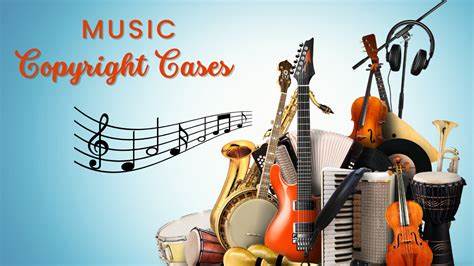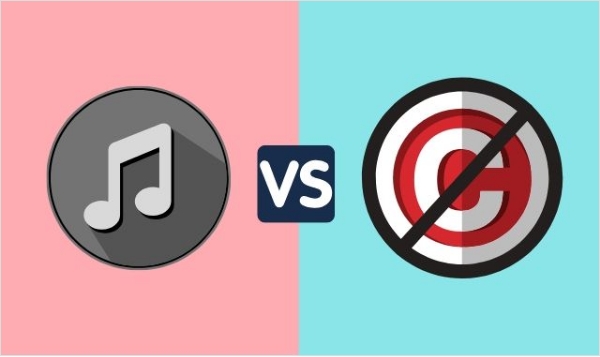Understanding Copyright in Music: A Comprehensive Guide to Licensing, Rights, and Industry Best Practices

KuliKuli Entertainment: Bridging Continents Through Music, Collaboration & Innovation
By Francis John, Co-Founder, KuliKuli Entertainment
Introduction
The music industry thrives on creativity, but its backbone is copyright law and licensing. Without a clear understanding of these legal frameworks, artists, producers, and record labels risk losing revenue, facing lawsuits, or missing out on lucrative opportunities.
This exhaustive guide merges Part I (Fundamentals of Music Copyright) and Part II (Types of Music Licensing) into a single, in-depth resource. We’ll cover:
- What music copyright protects
- Key stakeholders in music rights
- The 6 major types of music licenses
- Common legal pitfalls & how to avoid them
- Solutions for fair artist-label relationships
- Industry trends & future-proofing strategies

Part I: Fundamentals of Music Copyright
1. What Does Copyright Protect in Music?
Copyright law (U.S. Copyright Act of 1976, international Berne Convention) grants exclusive rights to:
✅ Musical Works (Composition – melody, lyrics)
✅ Sound Recordings (Fixed performance – the actual recording)
Key Takeaway:
- Songwriters & composers own the musical work.
- Recording artists & labels own the sound recording.
(Example: A cover song needs permission from the composition owner, not the original artist’s recording.)
2. Who Owns What? Key Stakeholders
| Stakeholder | Rights Held | Revenue Streams |
|---|---|---|
| Songwriter | Publishing rights (composition) | Royalties (mechanical, performance) |
| Performer | Sound recording rights | Streaming, sales, sync licenses |
| Producer | Often owns master rights (if contracted) | Points on sales, licensing fees |
| Record Label | Masters (if signed) | Distribution profits, licensing deals |
| Publishing Co. | Administer song copyrights | Collects royalties globally |
⚠️ Common Issue: Unclear splits lead to lawsuits (e.g., Blurred Lines case – $5M penalty for copyright infringement).
3. How Long Does Copyright Last?
- U.S. Law:
- Compositions: Life of author + 70 years
- Sound Recordings: 95 years from release (or 120 years from creation)
- Public Domain: Works expire (e.g., classical music) → free to use but verify!

Part II: The 6 Types of Music Licensing
1. Mechanical License
- Purpose: Reproduce/distribute a song (CDs, downloads, streaming).
- Who Needs It? Labels, streaming platforms (Spotify, Apple Music).
- Rate (U.S.): 9.1¢ per song (or 1.82¢ per minute) via Harry Fox Agency or compulsory license.
- ⚠️ Pitfall: Unlicensed covers on YouTube → Content ID claims.
2. Performance License
- Purpose: Public play (radio, TV, concerts, venues).
- Who Collects? PROs (ASCAP, BMI, SESAC) pay songwriters.
- 💰 Revenue: 4−6Bannually∗∗(ASCAPcollected∗∗4−6Bannually∗∗(ASCAPcollected∗∗1.5B in 2023).
- ⚠️ Pitfall: Restaurants playing music without license → fines up to $30K.
3. Synchronization (Sync) License
- Purpose: Pair music with visual media (films, ads, games).
- 💰 Big Money: 10K–10K–500K+ per sync (e.g., Stranger Things using Kate Bush).
- Who Approves? Publisher (composition) + Label (master).
- ⚠️ Pitfall: Unauthorized use in indie films → legal takedowns.
4. Master License
- Purpose: Use a specific recording in media.
- Example: Sampling Drake’s vocals → need master + composition rights.
- 💰 Cost: 5K–5K–1M+ (depends on artist fame).
- ⚠️ Pitfall: Uncleared samples → lawsuits (Robin Thicke vs. Marvin Gaye estate).
5. Print License
- Purpose: Reproduce sheet music.
- Used By: Bands, schools, Broadway.
- Rate: 10–15% of retail price.
6. Theatrical License
- Purpose: Stage performances (musicals, plays).
- Example: Hamilton pays 3-5% royalties to composers.
Industry Issues & Solutions
Problem 1: Unfair Royalty Splits
- Issue: Labels take 50-90% of royalties, leaving artists with scraps.
- Solution:
- Audit clauses in contracts (verify payments).
- Direct distribution (TuneCore, DistroKid keep 100% royalties).
Problem 2: Unlicensed Sampling & Lawsuits
- Issue: Producers get sued for uncleared samples (Kanye West’s $10M lawsuit).
- Solution:
- Use royalty-free loops (Splice, Artlist).
- Clear all samples before release (via E-Z Legal Clearance).
Problem 3: Streaming’s Low Payouts
- Issue: 0.003–0.003–0.008 per stream (artists need 1M streams ≈ $3K).
- Solution:
- Merch, tours, sync deals diversify income.
- Fan-powered royalties (SoundCloud, Bandcamp).
Problem 4: AI-Generated Music & Copyright
- Issue: AI clones voices (Drake & The Weeknd’s “Heart on My Sleeve” controversy).
- Solution:
- New laws needed (e.g., No AI Fraud Act).
- Watermarking AI tracks for transparency.
Future-Proofing Your Music Career
✅ Register works with PROs (ASCAP/BMI) + Copyright Office.
✅ Use blockchain for royalty tracking (Audius, Vezt).
✅ Negotiate better contracts (hire an entertainment lawyer).
Conclusion: A Fairer Music Industry
The key to success lies in education, transparency, and legal compliance. Artists must protect their rights, labels should offer fair deals, and consumers need to support ethical music distribution.
🚀 Call to Action:
- Artists: Audit your royalty statements!
- Producers: Clear every sample!
- Fans: Stream from platforms that pay fairly!
🔗 Sources & Further Reading:
- U.S. Copyright Office
- ASCAP Royalty Guide
- Spotify’s Payout System Explained
- Sample Clearance Guide
- https://kulikulientmt.com/
© Francis John, KuliKuli Entertainment














